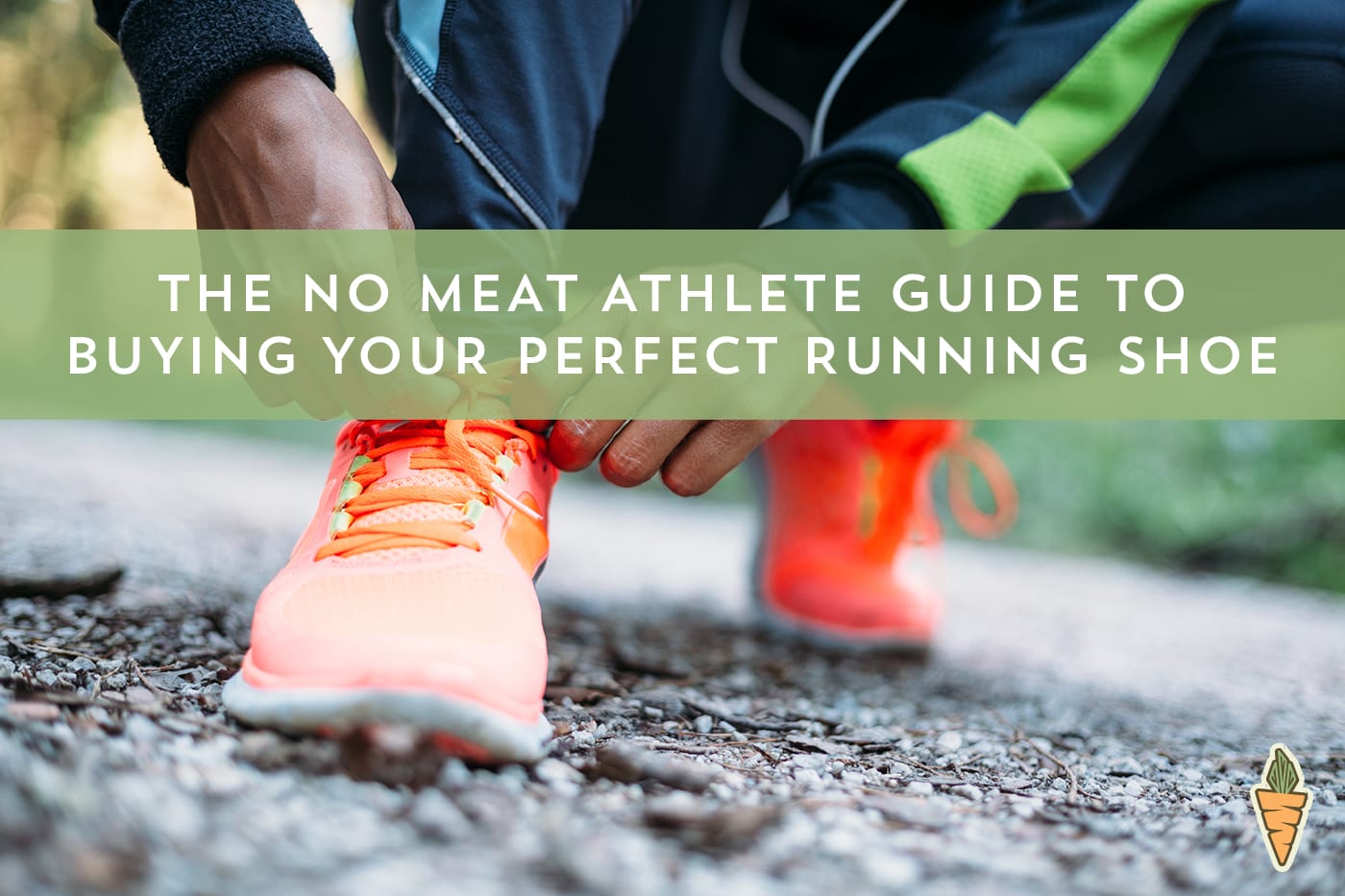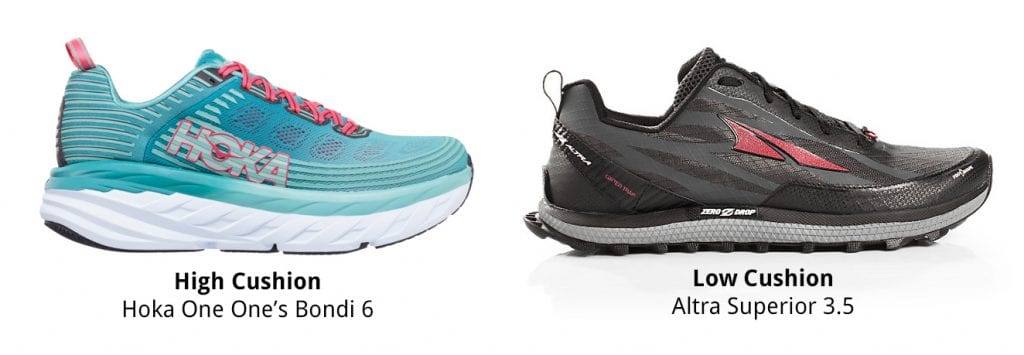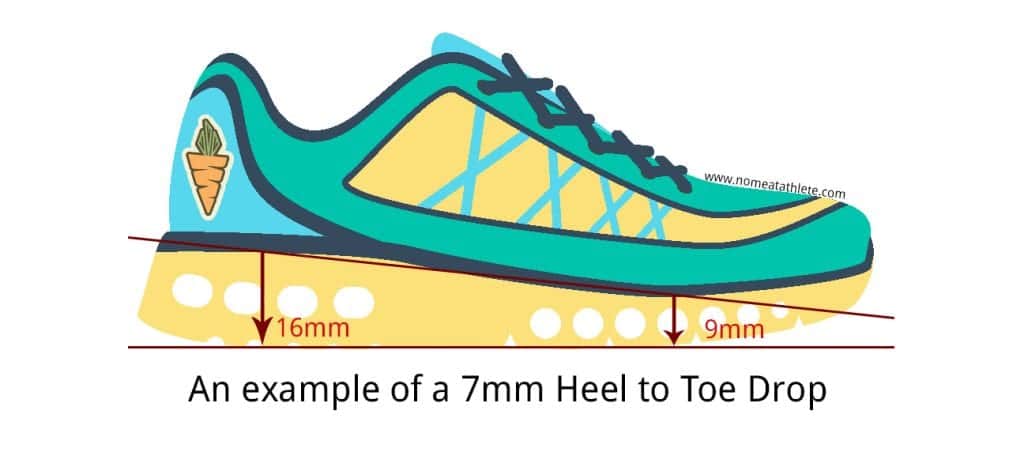
The No Meat Athlete Guide to Buying the Perfect Vegan Running Shoe for You
There’s nothing like a new pair of running kicks.
They look crisp, smell fresh, and — if you’re anything like me — instantly add a little extra pep to your stride.
I’ll even go as far as to say that it’s a sure bet that my first run in a new pair of shoes will be a good one.
But after that freshness wears off, after the smell turns sour and you’re left with just the miles on your training plan, what makes one running shoe better than any other?
Walk through a specialty running store and you’ll see dozens of brands and models to choose from, each with a different set of features that look and sound like the next best thing…
…New performance foams, shoe shapes, spring boards, and random other made-up-word materials, all promising to help you run faster or prevent your next injury.
So how do you decide?
As a long-time ultrarunner and regular shoe reviewer for sites like Competitor, I find myself trying out a new pair of shoes almost every month, and I’ve come to realize fancy marketing words have very little to do with a shoe’s performance.
While it might feel overwhelming in the store, finding the right shoe for you is not as complicated as you might think.
Below I share my tips for how to choose the perfect shoe to carry any plant-based athlete through their training and across the finish line.
What Vegans Should Know About Running Shoes
When it comes to running shoes for vegans, there’s good news and there’s bad news:
The good news is that in order to keep a shoe light and breathable, leather and other animal fibers are very rarely used. You can generally assume that the shoe materials are vegan.
The problem area for vegans comes from the glue that holds it all together, which is sometimes produced from animal bones. Worse, because many shoes are produced at multiple factories — upper made in China, sole in Thailand, and assembled in the US, for example — different glues can be used at different phases of the assembly process, and some shoe makers aren’t sure if all the glues are made from synthetic products.
If you want your shoe to be 100% vegan, then you’ll need to do some research ahead of time. Some brands have released blanket statements about their shoes, while others will label some as vegan and others not.
Certain online retailers like REI and Zappos do the research for you and allow you to sort by vegan shoes. Or you can often find out through quick Google searches and learn what other runners have shared.
When in doubt, contact support for the particular shoe company and see what they have to say.
Do you Need a Road Shoe or a Trail Shoe?
Trail running has exploded in popularity over the past several years, and with it, an influx of trail specific shoes.
Trail shoes are designed to protect your foot against more rugged terrain and grip the dirt, mud, or rock better than a road shoe.
So do you need a road shoe or a trail shoe?
Let’s get one thing clear, you can absolutely run roads in a trail shoe and trails in a road shoe. While they may not be as efficient or effective on the opposite surface, oftentimes you’ll notice little to no difference in good conditions.
That’s why I recommend you choose a shoe for the surface you run most often. For example, I probably run 65-70% of my miles on trail, therefore I typically invest in trail running shoes and use them for nearly all runs, even ones on the road.
But if you only hop on the trail every once in a while, stick with a road shoe, since that’s where you log most of your time.
Injury Prevention: Heel to Toe Drop and Cushion
In preparation for this article, I asked a buddy who works at a local running store what the #1 question he gets from people looking for new shoes. He said that hands down, the top question is some version of:
“Do I want a minimalist shoe or one with a bunch of cushion?”
People read a certain book or hear from a running friend that this type of shoe design is the only way to stay injury free.
But the truth is, everyone is different. So the first step is to decide what’s right for you and your style of running.
To better help you understand that, let’s start by looking at a few of the common terms:
Cushion
Everyone knows a heavily cushioned shoe when they see one, but how do you know what’s best for you?
These days the same company will often create a very minimalist, low profile shoe with little cushioning, as well as a heavily cushioned shoe with a massive stack height. Here’s an example of two very differently cushioned shoes:

A low profile, minimalist style of shoe:
- Allows for more ground feel, something that many runners find particularly helpful on the trail.
- Is said to naturally shift your running stride to one where you land on your midfoot instead of your heel.
A heavily, or max, cushioned shoe on the other hand:
- Absorbs a substantial amount of impact, which in turn can help with aches and pains during longer runs and races.
- Feels super soft and comfortable on your foot.
- Can help make recovery runs feel easier on the body.
Both, and everything in between, can serve a purpose for the right runner.
Heel to Toe Drop
Heel to toe drop is the difference in height between the heel and the forefoot.
For example, a shoe may have a 16mm stack height at the heel, but only an 9mm stack height at the forefoot. Therefore the heel to toe drop would be 7mm.

For a long time, it was very common for running shoes to have a significant heel to toe drop because it was believed that the extra padding in the heel took away some of the impact of your landing.
Now, many runners believe that too much heel to toe drop will encourage bad running form and may actually cause more injuries because of the strong heel strike.
In response, companies have begun to offer shoes with little to no heel to toe drop that are believed to naturally encourage you to land more on the midfoot (because there’s no extra padding to disguise a heel strike) and improve running form.
That being said, the heel to toe drop is still very much a thing, and many of the top-selling brands and shoes still have a large drop. (For example, Nike’s infamous VaporFly 4% has an 11mm heel to toe drop.)
How Do Each of These Prevent Injury?
Well, it depends on who you ask. But here are a few things I believe to be true:
- A shoe with a large heel to toe drop will encourage you to heel strike more than is healthy, and will likely leave you more vulnerable to injuries.
- If you’re switching from a shoe with a large heel to toe drop into one with a zero or low drop, take your time. Easing into those switches will reduce your risk of injury.
- Higher cushioned shoes can reduce the impact on certain joints (which is a good thing), but can also allow for your form to get sloppy without you naturally feeling the breakdown.
- Low cushioned shoes will give your foot more of a beating, but over time it will strengthen the foot and ankle muscles.
- Mixing up the type and style of shoe you run in helps strengthen different muscles, improve your stride, and help prevent repetitive strain.
So now you know what some of the options are going to be when you get to the running store.
But what does that actually look like when you walk into a running store?
The Real Question to Ask Yourself when Buying a Shoe
All these lead me to the real question every runner should ask themselves when buying a shoe.
The only question that truly matters:
How does the shoe feel on my foot?
It doesn’t matter what brand your favorite runner sports, or which marketing ploy caught your attention, the only thing that matters about a shoe is how it feels on your feet when you’re running.
- Does it lock your heel in place and offer the right amount room in the mid and forefoot?
- Does the amount of forward rock and ground connection fit your style?
- When you jog, how does the level of cushion feel with your stride?
I’m drawn to shoes with little to no heel to toe drop (6mm or less), which I’ve found encourages my best running form. But when it comes to cushion, I mix it up regularly. I love a shoe with minimal cushion for better ground feel on technical trails, and more cushion when I’m logging long miles on the road.
But I’m just one, non-elite runner. You’re your own runner with your own unique stride, injury history, and goals.
That’s why running specialty shops will almost always let you run in a shoe before you buy it — likely either on a treadmill or around the block.
The next time you’re in the market for a new pair of running shoes, come prepared to try on a variety of shoes, and maybe even get in a quick jog.
Because with the right pair of shoes, that new shoe feeling may never go away.




Leave a Reply